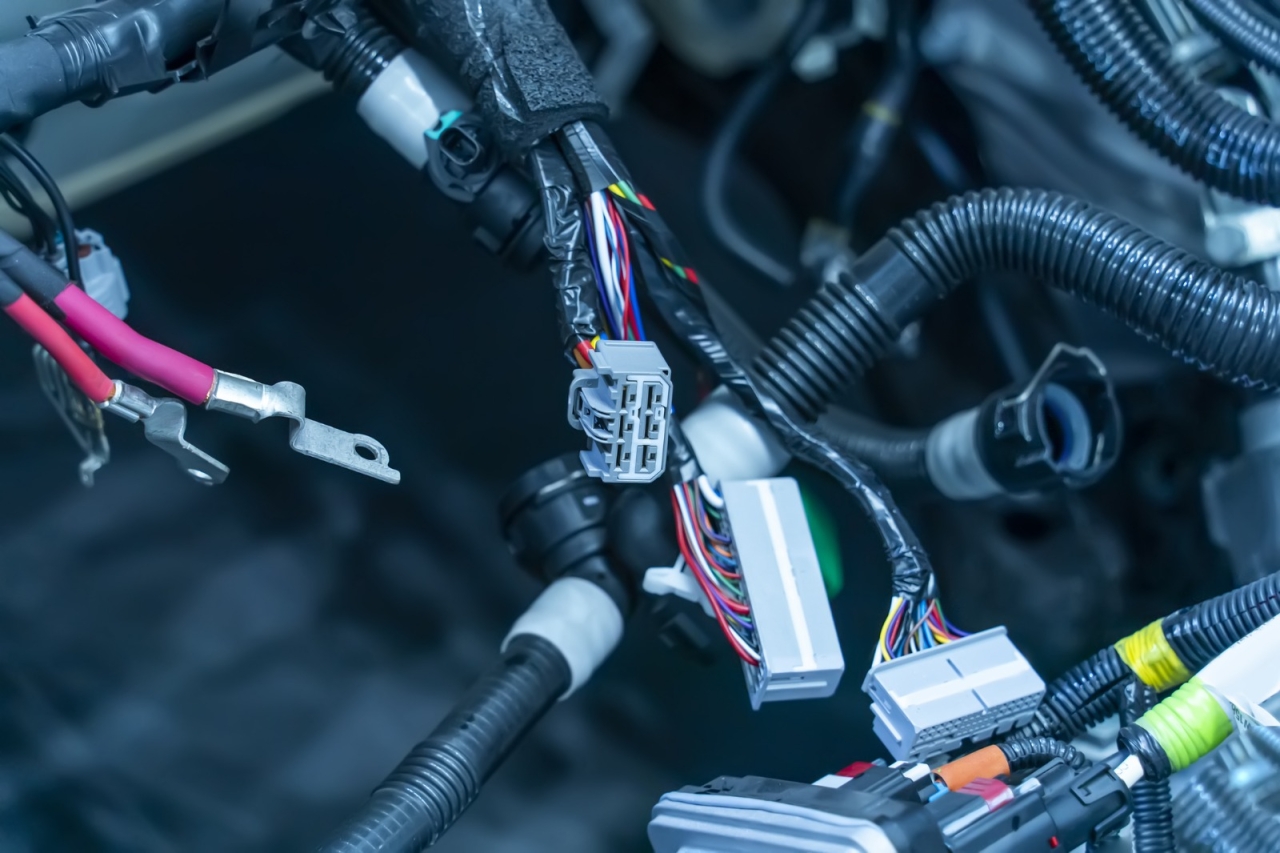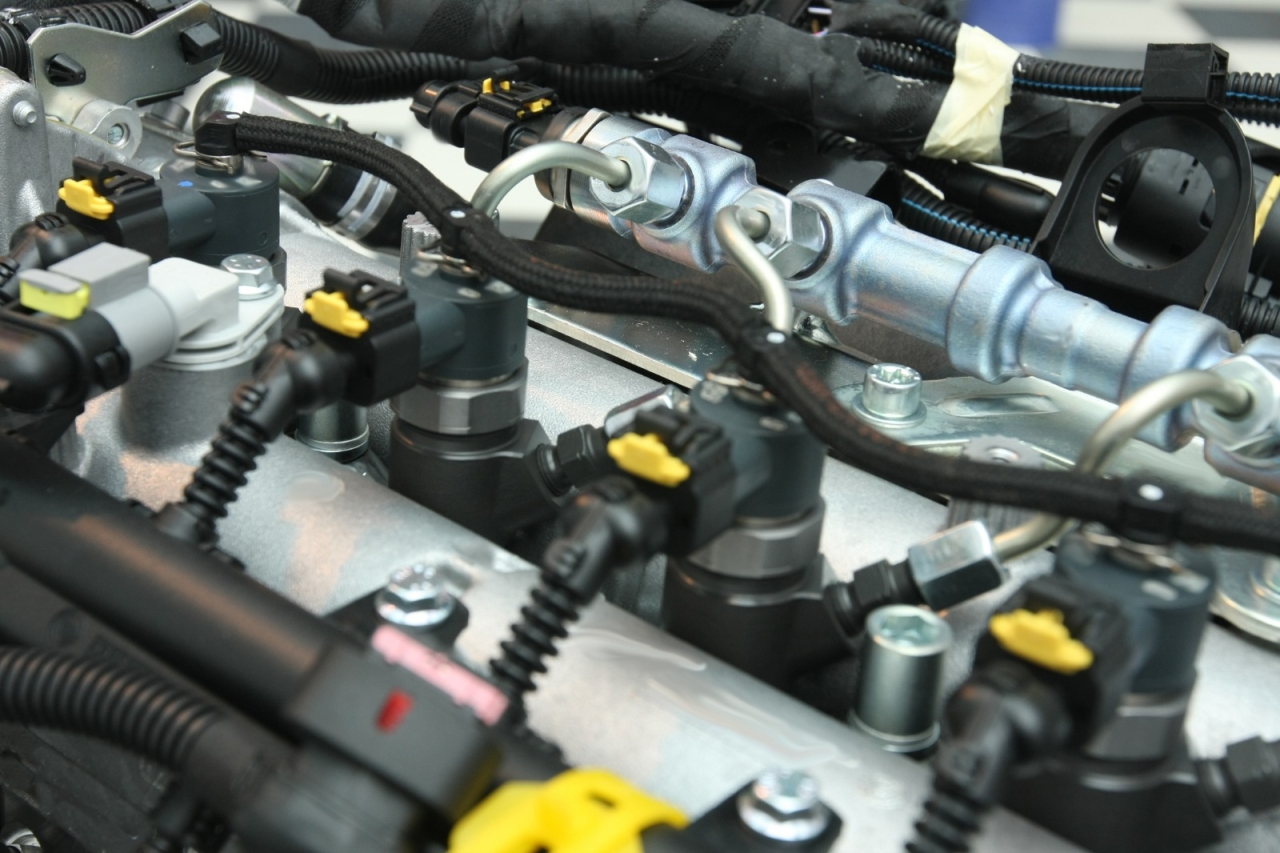This post explains how to approach used car electronics wisely. This includes ECU modules and sensors that determine engine performance, comfort, and safety. Learn when this is a worthwhile option and how to quickly match components using VIN and OEM numbers. We'll show you what really matters: hardware and software compatibility, power supply, bus connections, and a simple startup procedure. This is all based on the experience of Global Parts advisors with BMW, Mercedes, Audi, and VW vehicles. This means that purchasing from an online automotive store translates into predictable installation and a hassle-free car delivery experience.
Car electronics - how to choose it?
Key technical differences
A modern car consists of several computers working in a network. In practice, 40–80 modules are common, and in the premium segment, over 100. The system includes 70–150 sensors communicating via HS-CAN 500 kb/s–1 Mb/s, LIN ~19.2 kb/s, and FlexRay up to 10 Mb/s. A harness can have 2–5 km of wires and weigh 25–50 kg, so the right electronics selection significantly shortens service time. Used car parts in this category typically offer 20–50% savings over new parts while retaining factory mounting. VIN and OEM numbers facilitate version confirmation, but electrical and software parameters determine stable operation.
Signal, interface, software
Electrical first, label second. Even a perfect catalog number won't work if the signals and interfaces don't match. At the signal layer, analog sensors operate ratiometrically at 5 V in the 0.5–4.5 V range. Digital signals are usually Hall or PWM; newer sensors use single-cable SENT. Actuators and heaters are powered by 12 V, often on separate tracks. At the communication layer, a compatible bus is crucial: HS-CAN 500 kb/s–1 Mb/s, LIN ~19.2 kb/s, and in higher-end FlexRay platforms 10 Mb/s or CAN-FD with higher throughput. An incompatible speed or role on the bus causes the module to remain silent. At the software layer, the HW/SW variant, hardware parameterization, and possible synchronization with startup authorization are decisive. These are the keys to "plug-and-play." The VIN and OEM remain valid, but they serve as confirmation of the specifics, not a replacement for the electrical system. Therefore, it's important to remember the sequence: signal → bus → software; the VIN/OEM ensures compatibility., but they will not replace operating parameters.

Car electronics compatibility and installation
Numbers, models, years
The same model can have several electronics variants. The differences are based on the year, equipment, and program index. For example, the BMW E60 ECU differs between petrol and diesel. In the Mercedes ECU, the FBS3/FBS4 generation and key binding are important. In the Audi A3 ECU Component protection requires unlocking. Sensors return to constant logic: 5V power supply, 0.5–4.5V range for analog tracks, 12V for actuators, and the correct pinology. The VIN and OEM help quickly select the variant, and the HW/SW confirms configuration readiness. This order shortens the purchase process and allows for a faster return to full operation of your vehicle.
Steps, risks, when to service
Good preparation reduces testing and saves time on the lift. Ensure a stable 13-14V supply during setup and install at the factory points without stressing the harnesses. Then, perform coding or parameterization according to the equipment and, if applicable, synchronize with the start-up authorization system. Finish with a short drive and verification: communication via CAN/LIN, 5V reference voltage, no errors. For the engine and gearbox control units and security systems, it is worth using a service that knows the given brand.
Most common uses and pitfalls
In BMW ( BMW ECU ), engine management is often combined with body modules after retrofits. In Mercedes, it is crucial that the Mercedes ECU has been matched with the appropriate FBS generation and key. Audi/VW is returning to the topic of component protection in "electronic control modules" for comfort. In sensors (MAP, MAF, NOx, wheel speed), voltage, pinology, and operating range determine success; therefore, the replacement part or original parts arrive on site without modifications. VIN/OEM speeds up the selection, but compatible interfaces and software ensure smooth start-up. In short: Different brands, the same logic. Electrical parameters and software carry the result, VIN/OEM only leads to the correct reference.
Table – sample modules and parameters:
| Category | Example | Power/Signal | Interface | Post-assembly configuration |
|---|---|---|---|---|
| BMW engine ECU | ecu bmw e60 (DME/DDE) | 12V / 5V sensor lines | CAN | Coding + Boot Sync |
| Mercedes engine ECU | Mercedes ECU (ME/EDC) | 12V / 5V sensors | CAN | Coding + FBS3/FBS4 linking |
| Audi A3 engine ECU | audi a3 ecu | 12V / 5V sensors | CAN | Parameterization + component protection |
| ABS/ESP module | electronic control modules | 12V | CAN | Coding by equipment |
| MAP/MAF sensor | ECU sensor | 5V / 0.5 - 4.5V | - | Initialization if required |
Car electronics parameters
Mapping alternatives
In practice, there are three viable options. The first is original new parts, most often chosen for warranty repairs. The second is used car parts. with a reliable provenance and VIN/OEM compatibility, chosen for economy and speed. The third option is a replacement with parameters similar to the OEM and factory mounts. Both of these options are available in Poland and the EU. The choice depends on time, budget, and project planning. Compatibility and installation without modifications are key.
What really makes a difference
Four factors have the greatest impact on the result. First, HW/SW compatibility, which shortens coding. Second, sensor voltages and signal ranges, typically 5 V and 0.5–4.5 V. Third, buses and their speeds, primarily HS-CAN up to 1 Mb/s. Fourth, mounting and connector compatibility, as this determines workshop time. A well-documented catalog provides this information directly. In short: Electrical and software parameters are the key. Mechanical matching only completes the picture.
Benefits of Used Electronics
What does the driver and the workshop gain?
Well-selected used electronics deliver quick results at a reasonable cost. Savings compared to new parts are typically 20–50%, and installation is performed at the factory. Original components retain their standard mounting and operating logic, requiring no rework. For the workshop, this means fewer hours on the lift and simplified workflow. In short: Less expense, more predictability. Original fit shortens project time.
When used car parts beat new ones
In cars that have been in production for several years, new modules may become unavailable or have a long shelf life. They solve the problem "here and now" without changing the car's specification. In engine and gearbox control units, HW/SW compatibility is key – when it matches, configuration is quick. In sensors (MAP, MAF, NOx, wheel speed), voltages and pinout are important; the original used parts have them identical to those in the car. Availability and compatibility trump waiting, and when the parameters match, installation is simple.
Benefits for different audiences
Private user vs service
Drivers benefit from lower repair costs and reduced vehicle downtime. The VIN and OEM number simplify the decision, making the selection quick and reliable. The workshop will appreciate the consistency: the same wiring harness, the same connectors, the same coding procedure. This creates order in the schedule and fewer unplanned visits. In short: For the driver, budget and deadlines are key. For the workshop, it's speed and predictability.
Table – quick comparison of used car electronics and new parts:
| Approach | Cost | Availability | Assembly/Coding | Who is it best for? |
|---|---|---|---|---|
| New OEM | the highest | it is sometimes limited | predictable | warranty projects |
| Used OEM | 20–50% cheaper | most often fast | factory-compatible | repairs and modernizations |
| Substitute | mediocre | usually good | important mountings/parameters | consumables |
 |
FAQ: Driver Questions and Answers Global Parts
| Question | Answer |
|---|---|
| What is ECU? | ECU ( Electronic Control Unit) is an electronic module that controls engine operation. It receives signals from sensors and controls actuators. |
| What does HW/SW mean in driver? | These designations indicate hardware and software versions. They help predict the scope of coding and parameterization. |
| Are the ECUs and sensors used safe? | Yes, as long as they match the VIN and OEM and have the correct HW/SW parameters. Installation then follows factory logic. |
| Can Mercedes ECU be started without additional steps? | Typically, a linking procedure with the FBS generation and vehicle key is needed. |
| Does the Audi A3 ECU require additional action? | Component protection works in many versions. Parameterization is required according to the documentation. |
| How to choose a sensor that fits right away? | All you need is the OEM number, VIN and verification of the supply voltage and the signal range of 0.5–4.5 V. |
| To wrap things up, it's worth starting with the VIN and OEM numbers, then establishing a list of control units and sensors for your specific vehicle. Global Parts consultants will help you select the electronics based on your vehicle's configuration and plan the installation so your car returns to driving predictably and without any modifications. |